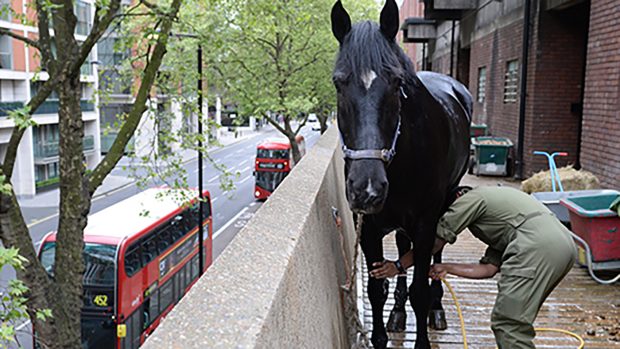Susan McBane is a woman with a mission. The author of 100 Ways to Improve Your Horse’s Schooling is determined to make people aware that horses suffer from thermal discomfort.
“People seem to assume horses will be fine in summer and only worry about winter,” she says. “But horses overheat easily.”
Common sense — riding early in the morning or late in the evening, for example — goes a long way to prevent overheating problems, but property buyers should consider purchasing or setting up a summer-proof yard.
The single most important way to counter the impact of hot weather is to give horses free access to clean, fresh water. Like humans, horses control their temperature through sweating. However, this can lead to dehydration if the water and minerals aren’t promptly replenished.
The safest solution is to install plenty of troughs and keep them full, as shallow water is sometimes hard to reach for smaller horses or ponies. Choosing self-filling troughs is the easiest, though costliest, option, as long as owners ensure the water is clean and that horses are drinking it.
A number of experts also advocate turning horses out in the evening and keeping them stabled in the day during summer, to minimise exposure to blazing sun and flies. This only works if the stables are cool and well ventilated, otherwise they can quickly become furnace-like.
However, as Zoe Napier of agent Fenn Wright, says: “Unless a buyer views on a very hot day, it is virtually impossible to ascertain how hot or cool the stabling can be.”
The only way to figure it out is to look for some useful pointers. “Ideally, you’d want the stables made of brick or stone, but this is expensive,” says McBane. “So at least insulate the roof.” A high roof, which allows airflow, and good ventilation also help keep stables cool.
McBane is a fan of cross-ventilation. Ideally, she prefers a ridge roof ventilator with louvre windows, but this can be hard to find. An alternative is to have openings in the stables’ back walls to allow air to circulate. If you would rather build your own stables than buy them ready made, be aware that those with rooflines of more than 4m total height will “almost certainly require planning permission, even if within the domestic curtilage and always if on paddock or grazing land areas”, according to Napier.
No matter what time of day you would rather turn your horses out, make sure you have a sturdy field shelter, or at least a cluster of trees where animals can seek refuge from the heat.
If your horses are primarily grass-fed, it is also crucial to look for a home with well laid out land that will simplify pasture management, as fields tend to dry out during summer — especially now water shortages across much of Britain may lead to compulsory metering or hosepipe bans.
“Get drought-resistant species of grass and keep up paddock care, picking up droppings and rotating paddocks, because this allows grass to regenerate and grow,” says McBane.
This means having 1-1½ acres per horse, split into smaller enclosures. In some cases, however, the nature of the ground fights against us. While sandy loam soil makes the best summer pasture, clay bakes hard and preferably should be avoided.
If you are planning to buy in areas such as parts of Dorset or the Weald, avoiding clay is geologically impossible. In that case, you should either buy a property with an all-weather manège or install one where your horse can mooch about during the summer months to reduce risks of concussion.
“I don’t see anything wrong with turning horses out on a manège with a haynet,” says McBane. “Or you could create a playpen with a sandy surface. All you need is two horses, food and water, and they’re fine.”
|
SUBSCRIBE TO HORSE & HOUND AND SAVE Enjoy all the latest equestrian news and competition reports delivered straight to your door every week. To subscribe for just £1.43 a copy click here >>
|




